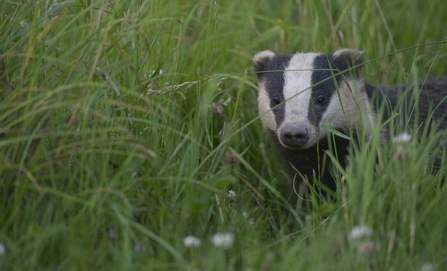
© Bertie Gregory/2020VISION

© Bertie Gregory/2020VISION
The Wildlife Trusts have shared their response to the Government’s consultation [1] on the badger cull and are calling upon the Government to stop issuing badger cull licences with immediate effect.
Based on their analysis of the consultation, The Wildlife Trusts are calling on the Government to:
Recent Government proposals suggested an end to granting cull licences in 2022, but this could still result in another 130,000 badgers being killed over the next four years.
Jo Smith, Chief Executive at Derbyshire Wildlife Trust said: “There is much confusion in the public domain about the Government proposals to end the badger cull. Recent media headlines stated that the cull would end in 2022 but the reality is that badger culling will continue until 2026. This is because the majority of cull licences last four years.”
The Wildlife Trusts are calling on the public to respond to the consultation which ends on 24 March – and help end the cull. This is the latest step in the fight by The Wildlife Trusts to end the killing of badgers, a protected species.
The Government’s proposals have different implications for different parts of England. In the High Risk Areas for bovine TB in the South West and West, the end of many years of badger culling may now be in sight, but in those counties that lie in the Edge Area like Derbyshire, Nottinghamshire and other central counties, the proposals could lead to a rush in applications for badger cull licences that will run for at least four years.
The Wildlife Trusts have always been firmly opposed to the badger cull and believe that it is an ineffective tool in the fight against bovine tuberculosis (bTB). To date, over 140,000 badgers have been culled [2]. The proposals recently announced by the Government as part of a consultation process will result in approximately another 130,000 badgers being killed, taking the total to almost 300,000. The total badger population in England and Wales was estimated to be around 485,000 in 2017 [3].
The four year badger cull in Cumbria, which started in 2018, is expected to end in 2021.
References
[1] Defra’s consultation can be found here published 27th January 202.1
[2] The figure for the total number of badgers killed is taken from Natural England’s policy paper: Data from the 2020 badger control operations, published 27th January 2021.
[3] The figure for the badger population is taken from: Judge, J., Wilson, G.J., Macarthur, R. et al. Abundance of badgers (Meles meles) in England and Wales. Sci Rep 7, 276 (2017).
The Wildlife Trusts and the badger cull
We believe an evidence-based and scientifically reliable approach must be developed to counteract the risk posed to cattle by bTB.
1. Accelerate research into cattle vaccination and improve testing regimes for cattle.
Cattle vaccination offers the best long-term way to reduce bTB in the cattle population. The research, testing and trialling of a vaccine has been completed, but it is not yet technically called a vaccine in this country as it has to be accredited. However, accreditation for the European market cannot be progressed whilst an EU ban remains in place on the use of such a vaccine. The ban exists because BCG vaccination of cattle can interfere with the tuberculin skin test which is the recognised primary diagnostic test for TB in cattle. A test called a DIVA test could help resolve this issue.
2. Reduce cow-to-cow infections - the major cause of TB infection. The risk of spreading disease when cattle are transported can be minimised by tightening movement controls on cattle even further.
3. Ensure higher standards of biosecurity on farms.
Studies indicate bTB transmission may occur via contaminated pasture or around farm buildings but a study by the Food and Environment Research Agency concluded that simple exclusion measures are 100% effective in preventing badgers entering farm buildings when deployed properly. Best practice videos and leaflets are available from Defra. If biosecurity is linked to cross-compliance for subsidy payments on-farm disease transmission should be significantly prevented.
4. Help to roll out badger vaccinations.
Badger vaccination has the potential to reduce badger-to-cattle transmission by lowering the prevalence of infection in the badger population. Vaccination does not remove infected badgers, but it does reduce their ability to infect other badgers (which are protected by the vaccine). Over time, the infected animals should die off, and the prevalence of infection would be expected to decline.
In a clinical trial, the BCG vaccine reduced the risk of vaccinated badgers testing positive to a test of progressed infection by 76% and reduced the risk of testing positive to any of the available live tests of infection by 54%. In the same clinical trial, BCG vaccination reduced the risk of infection of unvaccinated cubs in a vaccinated social group - when more than a third of the social group was vaccinated, the risk to unvaccinated cubs was reduced by 79%.